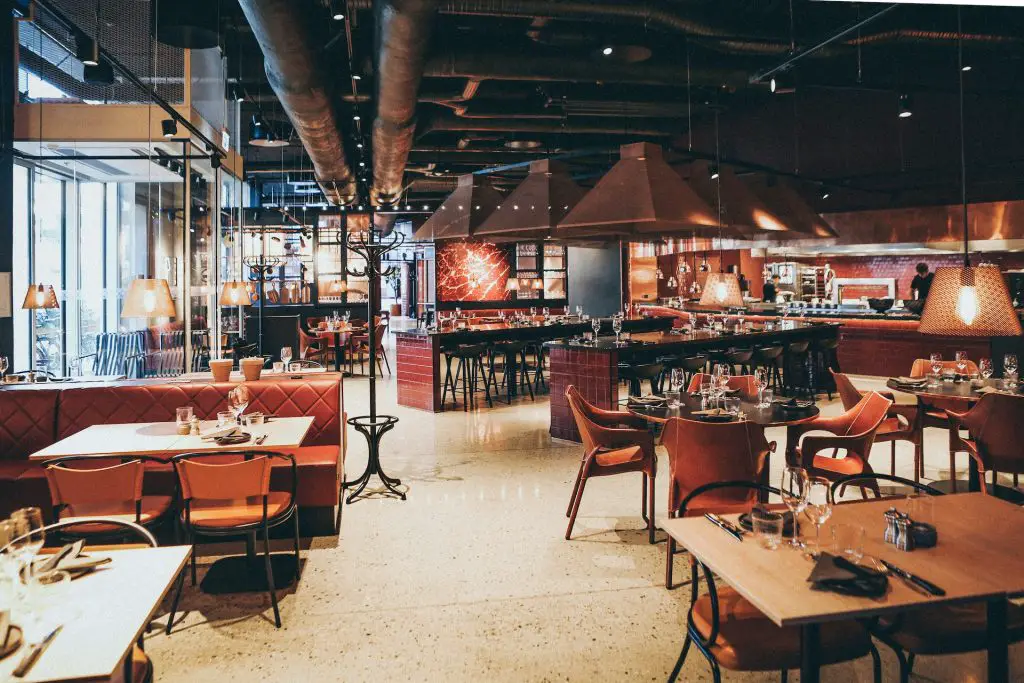Starting a restaurant can be an exciting and rewarding endeavor, but it also requires careful planning, hard work, and a passion for food and hospitality. Whether you’re a seasoned chef looking to realize your culinary dreams or a budding entrepreneur eager to break into the restaurant industry, this step-by-step guide will walk you through the process of starting your own restaurant. From concept development to opening night, we’ll cover everything you need to know to make your restaurant a success.
Step 1: Define Your Concept and Niche
The first and most crucial step in starting a restaurant is defining your concept and niche. Your concept will serve as the foundation for your entire restaurant, influencing everything from the menu to the décor. Here are some key considerations:
Cuisine: What type of cuisine will your restaurant specialize in? Will it be a casual eatery serving comfort food, a fine dining establishment with a focus on gourmet cuisine, or something in between?
Target Audience: Who is your target audience? Consider factors like age, income level, and dining preferences. Your concept should cater to the tastes and preferences of your chosen demographic.
Location: Where do you want to open your restaurant? The location should align with your concept and target audience. For example, a trendy urban area might be perfect for a modern fusion restaurant, while a suburban location could be ideal for a family-friendly establishment.
Unique Selling Proposition (USP): What will set your restaurant apart from the competition? Your USP could be anything from a signature dish to a unique dining experience.
Restaurant Name and Branding: Choose a catchy and memorable name for your restaurant that reflects your concept. Develop a cohesive brand identity, including logos, colors, and a consistent theme.
Step 2: Create a Business Plan
A well-thought-out business plan is essential for securing financing and guiding your restaurant’s growth. Your business plan should include the following elements:
Executive Summary: Provide a brief overview of your restaurant, its concept, and your goals.
Market Research: Conduct market research to understand the demand for your restaurant in your chosen location. Analyze your competitors and target audience.
Menu and Pricing: Outline your menu and pricing strategy. Include food costs, menu design, and potential pricing adjustments.
Management Team: Introduce your management team and their qualifications. Highlight any relevant experience in the restaurant industry.
Marketing and Sales Strategy: Detail how you plan to market your restaurant and attract customers. This should include online and offline marketing strategies.
Financial Projections: Create financial projections, including startup costs, revenue forecasts, and a break-even analysis. Provide a clear picture of your restaurant’s financial viability.
Funding Request: If you need financing, specify how much you need and how you plan to use the funds. This could include loans, investments, or personal savings.
Step 3: Legal and Regulatory Requirements
Starting a restaurant involves navigating a maze of legal and regulatory requirements. Here are some important steps to consider:
Business Structure: Choose a legal structure for your restaurant, such as a sole proprietorship, partnership, LLC, or corporation. Each has its own tax and liability implications.
Permits and Licenses: Obtain the necessary permits and licenses to operate a restaurant legally. This may include health permits, alcohol licenses, and food handling permits.
Food Safety and Health Regulations: Familiarize yourself with local health and safety regulations. Ensure that your kitchen and food preparation processes meet these standards.
Employment Regulations: Understand labor laws and regulations, including minimum wage, overtime, and employee benefits. Create employment contracts and handbooks.
Insurance: Purchase insurance coverage, including liability insurance and workers’ compensation, to protect your business and employees.
Taxation: Register for federal, state, and local taxes, including income tax, sales tax, and payroll tax. Consult with an accountant or tax professional to ensure compliance.
Step 4: Secure Financing
Starting a restaurant can be capital-intensive, so you’ll need to secure funding to cover startup costs and initial operating expenses. Here are some financing options to consider:
Personal Savings: Many restaurant owners use their personal savings to fund their startup. This allows for greater control and avoids taking on debt.
Bank Loans: Traditional bank loans, including term loans and lines of credit, can provide capital for your restaurant. Be prepared to present a solid business plan to secure financing.
Investors: Seek out investors who are willing to provide capital in exchange for equity in your restaurant. Angel investors and venture capitalists may be interested in restaurant ventures.
Crowdfunding: Consider using crowdfunding platforms to raise funds from a large number of individuals who believe in your restaurant concept.
Grants and Contests: Look for grants and contests specific to the restaurant industry. These opportunities can provide non-repayable funds or valuable resources.
Family and Friends: Some entrepreneurs turn to family and friends for financial support. If you choose this option, be sure to formalize the terms of the investment.
Step 5: Find a Location and Design Your Space
The location of your restaurant can significantly impact its success. Conduct a thorough search for the perfect location, considering factors such as foot traffic, accessibility, and proximity to your target audience. Once you’ve found the right spot, work on designing your restaurant space:
Layout and Floor Plan: Create a functional floor plan that maximizes seating capacity and optimizes the flow of customers and staff.
Interior Design: Choose a design style that aligns with your concept and brand. Consider the ambiance you want to create, including lighting, color schemes, and decor.
Kitchen Design: Design an efficient kitchen layout that facilitates food preparation and service. Ensure that it meets health and safety standards.
Equipment and Furnishings: Purchase the necessary kitchen equipment, furniture, and fixtures. Make sure everything is in compliance with regulations.
Step 6: Develop Your Menu
Your menu is the heart of your restaurant, so it’s crucial to develop it carefully. Consider the following when creating your menu:
Food Concept: Ensure that your menu items align with your restaurant’s concept and target audience. Choose a range of dishes that cater to different tastes.
Pricing Strategy: Price your menu items competitively while covering your costs and generating a profit. Consider factors like ingredient costs, portion sizes, and pricing psychology.
Ingredient Sourcing: Establish relationships with suppliers and ensure the quality and freshness of your ingredients. Consider local sourcing for a unique selling point.
Menu Testing: Before opening, conduct menu tastings and gather feedback from potential customers. Use this feedback to refine your menu.
Dietary Restrictions: Accommodate dietary restrictions and preferences, such as vegetarian, vegan, and gluten-free options. Clearly label these on your menu.
Seasonal Variations: Consider offering seasonal menu items to keep your menu fresh and exciting throughout the year.
Step 7: Hire and Train Your Staff
Your staff plays a vital role in delivering excellent customer service and maintaining the overall quality of your restaurant. Hire and train your team carefully:
Chef and Kitchen Staff: Hire experienced chefs and kitchen staff who can execute your menu to perfection. Conduct rigorous interviews and tastings.
Front-of-House Staff: Recruit servers, hosts/hostesses, and bartenders who are friendly, knowledgeable, and customer-focused.
Training Programs: Implement comprehensive training programs for both kitchen and front-of-house staff. Ensure they understand your restaurant’s culture and standards.
Scheduling: Develop efficient staff scheduling to meet the demands of peak dining hours and minimize labor costs.
Employee Retention: Create a positive work environment and offer competitive compensation to retain top talent.
Step 8: Marketing and Promotion
Effective marketing and promotion are essential for attracting customers and building a loyal customer base. Consider the following strategies:
Online Presence: Create a professional website with an attractive menu, high-quality photos, and contact information. Utilize social media platforms to engage with potential customers.
Social Media Marketing: Develop a social media strategy to promote your restaurant, share menu updates, and interact with followers.
Local SEO: Optimize your website for local search engine optimization to ensure that your restaurant appears in local search results.
Email Marketing: Build an email list and send regular newsletters with special offers, events, and updates.
Community Engagement: Get involved in your local community by participating in events, supporting charities, and collaborating with nearby businesses.
Public Relations: Consider reaching out to local media outlets and food bloggers for coverage and reviews.
Opening Events: Plan a grand opening event to generate buzz and attract the local community.
Step 9: Pre-Opening Checklist
As opening day approaches, there are several critical tasks to complete:
Staff Training: Ensure that all staff members are trained and ready for opening night.
Inventory and Supplies: Stock up on all necessary ingredients, beverages, and supplies.
Point-of-Sale (POS) System: Set up your POS system and ensure that it’s functioning correctly.
Test Run: Conduct a soft opening or friends and family night to identify and address any operational issues.
Marketing and Promotion: Ramp up your marketing efforts to create excitement around your restaurant’s opening.
Step 10: Grand Opening
Your grand opening is a significant event that can set the tone for your restaurant’s future success. Make it memorable:
Invitations: Invite local influencers, food critics, and the community to attend your grand opening.
Special Promotions: Offer discounts or special promotions to attract a large crowd.
Food and Service Quality: Ensure that your food and service are exceptional on opening night to leave a positive impression.
Feedback Collection: Encourage customers to provide feedback and reviews online.
Step 11: Ongoing Operations and Growth
After the initial excitement of the grand opening, the hard work of running a restaurant continues. Focus on ongoing operations and growth:
Quality Control: Maintain consistently high food and service quality to keep customers coming back.
Customer Feedback: Continuously gather and analyze customer feedback to make improvements.
Marketing: Continue your marketing efforts to attract new customers and retain existing ones.
Financial Management: Monitor your finances closely, adjust pricing and expenses as needed, and plan for long-term sustainability.
Expansion: If your restaurant is successful, consider expanding to additional locations or offering catering services.
Stay Informed: Keep up with industry trends and changes in consumer preferences to stay competitive.
Starting a restaurant is a challenging but rewarding journey. With careful planning, dedication, and a focus on providing a great dining experience, you can turn your restaurant dream into a thriving business. Remember that success may not happen overnight, but with perseverance and a commitment to excellence, your restaurant can become a beloved fixture in your community.
Step 12: Adapt and Innovate
In the ever-evolving restaurant industry, the ability to adapt and innovate is crucial for long-term success. Keep an eye on industry trends and consumer preferences, and be willing to make necessary adjustments to your concept, menu, and operations. Here are some strategies to consider:
Menu Updates: Regularly refresh your menu to introduce new dishes, seasonal items, and trendy ingredients. Experiment with different flavors and cuisines to keep your offerings exciting.
Technology Integration: Embrace technology to improve the customer experience. Consider offering online ordering, delivery services, and mobile payment options.
Sustainability Initiatives: Implement eco-friendly practices, such as sourcing locally, reducing food waste, and using sustainable packaging. Highlight your commitment to sustainability to attract environmentally conscious customers.
Customer Engagement: Engage with your customers through social media, email marketing, and loyalty programs. Encourage feedback and actively respond to reviews, both positive and negative.
Special Events and Promotions: Plan special events, promotions, and themed nights to create excitement and draw in a diverse crowd.
Collaborations: Partner with local businesses, chefs, or breweries for collaborations and pop-up events. This can help you tap into new customer bases and generate buzz.
Employee Training: Continuously invest in staff training to ensure that your team is well-equipped to deliver exceptional service and uphold your restaurant’s reputation.
Step 13: Financial Management and Sustainability
Sustainable financial management is essential for the long-term viability of your restaurant. Monitor your finances closely and make informed decisions to ensure profitability and growth:
Budgeting: Create a detailed budget that includes all operating expenses, including rent, utilities, payroll, and inventory. Stick to your budget to avoid overspending.
Inventory Control: Implement effective inventory management practices to minimize food waste and reduce costs. Track inventory turnover and adjust ordering accordingly.
Revenue Analysis: Regularly analyze your sales data to identify trends and patterns. Use this information to make pricing adjustments and optimize your menu.
Cost Management: Continuously look for ways to reduce costs without compromising quality. Negotiate with suppliers for better pricing and explore energy-efficient solutions.
Financial Reporting: Generate regular financial reports to assess the health of your restaurant. Seek the guidance of an accountant or financial advisor for insights into your financial performance.
Cash Flow Management: Manage your cash flow effectively to ensure you have enough liquidity to cover operational expenses and unforeseen costs.
Debt Management: If you have taken on debt to finance your restaurant, prioritize debt repayment to reduce interest expenses.
Step 14: Customer Satisfaction and Feedback
Happy customers are the lifeblood of any successful restaurant. Continuously focus on customer satisfaction and feedback to build a loyal customer base:
Quality Assurance: Maintain consistent food quality and service excellence to meet or exceed customer expectations.
Feedback Collection: Actively seek customer feedback through comment cards, online reviews, and surveys. Encourage honesty and respond promptly to any concerns.
Training: Ensure that your staff is trained in exceptional customer service and is attentive to the needs of diners.
Personalization: Personalize the dining experience when possible, such as remembering repeat customers’ preferences.
Loyalty Programs: Implement a loyalty program that rewards repeat customers with discounts, special offers, or exclusive events.
Community Engagement: Participate in community events and support local causes to foster goodwill and build a positive reputation.
Step 15: Legal Compliance and Regulation
Staying compliant with legal requirements and regulations is an ongoing responsibility. Keep your restaurant in good standing by:
License Renewal: Ensure that all permits and licenses remain current and are renewed as needed.
Health Inspections: Maintain a clean and safe environment to pass health inspections and avoid penalties.
Labor Laws: Stay informed about changes in labor laws and employment regulations. Make any necessary adjustments to your policies and practices.
Tax Compliance: Keep up with tax filings and payments to avoid legal issues and penalties.
Alcohol Control: If your restaurant serves alcohol, adhere to alcohol control regulations and ensure responsible alcohol service.
Environmental Regulations: Continue to follow eco-friendly practices and adhere to environmental regulations.
Legal Counsel: Consult with legal professionals or industry experts to stay updated on legal requirements and compliance issues.
Starting and running a restaurant is a challenging but rewarding journey that requires careful planning, dedication, and a commitment to excellence. By following this step-by-step guide, you can set a solid foundation for your restaurant’s success. Remember that success in the restaurant industry often comes through a combination of a great concept, exceptional food and service, effective marketing, and ongoing adaptation to changing trends and customer preferences. With determination and a passion for hospitality, your restaurant can thrive and become a beloved culinary destination in your community.




